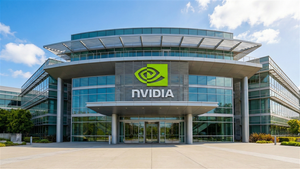MicroCloud Hologram Inc. Develops End-to-End Quantum Classifier Technology Based on Quantum Kernel Technology
SHENZHEN, China, May 20, 2025 (GLOBE NEWSWIRE) -- MicroCloud Hologram Inc. (NASDAQ: HOLO), (“HOLO” or the "Company"), a technology service provider, announced the development of a new quantum supervised learning method, with rigorous proof of its quantum speedup capability in end-to-end classification problems. This method not only overcomes the limitations of many current quantum machine learning algorithms but also provides a robust approach, enabling it to maintain efficient and high-precision classification capabilities even under errors introduced by limited sampling statistics.
The core of HOLO's end-to-end quantum-accelerated classifier method lies in constructing a classification problem and designing a quantum kernel learning approach that leverages quantum computing for acceleration. In this process, a carefully constructed dataset is proposed, and it is proven that, under the widely accepted assumption that the discrete logarithm problem is computationally difficult, no classical learner can classify this data with inverse polynomial accuracy better than random guessing. The choice of this assumption is critical, as the discrete logarithm problem is a cornerstone of modern cryptography and is considered extremely difficult to solve on classical computers. Thus, if HOLO's quantum method can effectively address this problem and provide classification capabilities significantly superior to classical algorithms, it would formally demonstrate the existence of quantum advantage.
Furthermore, to ensure the quantum classifier's feasibility in real quantum computing environments, HOLO designed a series of parameterized unitary quantum circuits and proved their efficient implementation on fault-tolerant quantum computers. These quantum circuits map data samples into a high-dimensional quantum feature space and estimate kernel entries through the inner product of quantum states. Through this process, HOLO's quantum classifier fully exploits the exponential computational power of quantum computing, achieving classification accuracy far surpassing that of classical machine learning methods.
The core idea of quantum kernel learning lies in using quantum computers to compute specific kernel functions that classical computers cannot efficiently calculate due to computational complexity. Traditional supervised learning methods, such as support vector machines (SVMs), rely on kernel methods to measure similarity between data points, whereas HOLO’s approach achieves this by leveraging the inner product of quantum states.
HOLO proposes a parameterized quantum circuit (PQC) that embeds classical data into quantum states and computes the inner product of these states on a quantum computer to estimate quantum kernel function values. This method not only harnesses the immense computational power of quantum computers but also exhibits greater robustness under limited sampling statistics, ensuring the algorithm’s stability and scalability.
Dataset Construction: HOLO designs a dataset that prevents classical computers from finding effective classification schemes in polynomial time, while quantum computers can efficiently perform classification using quantum kernel methods. The construction of this dataset is based on the hardness of the discrete logarithm problem, which results in exponential time complexity on classical computers. In contrast, quantum computers can leverage techniques like the quantum Fourier transform (QFT) to provide efficient solutions.
Quantum Feature Mapping: HOLO employs a parameterized quantum circuit (PQC) for feature mapping of data samples. These circuits are designed to be flexible enough to accommodate various types of input data and can be effectively executed on quantum computers. Specifically, by utilizing the high-dimensional representation capabilities of quantum states, classical data is transformed into quantum states, ensuring that data from different classes are projected as separably as possible in the quantum feature space, thereby enhancing classification feasibility and accuracy.
Quantum Kernel Computation and Classification: The key to quantum kernel methods lies in computing the similarity of data points in the quantum feature space, a process that is typically infeasible to perform efficiently on classical computers. However, HOLO’s approach leverages quantum computers to directly compute the inner product between quantum states, thereby constructing a quantum kernel matrix that is ultimately used to train classical machine learning models such as support vector machines (SVMs). During the training process, the efficient kernel computation provided by quantum computers significantly reduces computational complexity and achieves quantum speedup.
Robustness Enhancement and Error Handling: Due to the fact that existing quantum computers are still in the stage of strong noise interference, special attention has been paid to the error problem introduced by finite sampling statistics.To address this, HOLO introduces an error correction method that effectively mitigates the impact of random noise in quantum computations, ensuring the stability of the results. Additionally, the method incorporates optimization strategies from variational quantum algorithms (VQAs), enabling the quantum classifier to maintain high classification accuracy even under constrained quantum resources.
This research not only demonstrates the feasibility of end-to-end quantum speedup but also provides new directions for future quantum machine learning studies. Currently, many quantum machine learning algorithms rely on strong assumptions or heuristic methods, making it challenging to provide rigorous theoretical guarantees. In contrast, HOLO’s research showcases a genuinely viable quantum advantage approach, successfully achieving end-to-end speedup in the context of supervised learning.
From an application perspective, this technology can be widely applied in numerous fields requiring efficient classification. For instance, in financial market prediction, where vast amounts of complex market data need to be processed efficiently, HOLO’s quantum supervised learning method can leverage the speedup capabilities of quantum computing to achieve faster and more accurate classification and prediction of financial data. Additionally, in the biomedical field, this method can be used for large-scale gene data classification to identify different disease patterns, thereby advancing the development of precision medicine.
As quantum computing hardware continues to advance, HOLO’s research outcomes are expected to undergo larger-scale validation and application on future fault-tolerant quantum computers. It is foreseeable that, with improvements in quantum computing capabilities, quantum supervised learning methods will play an increasingly significant role in the field of machine learning, providing more efficient solutions for various complex data problems.
HOLO has proposed a robust quantum supervised learning method and successfully demonstrated its quantum speedup capabilities in end-to-end classification problems. By constructing specific datasets and utilizing parameterized quantum circuits for quantum feature mapping, it achieves an efficient and robust quantum classifier. Furthermore, HOLO’s method effectively mitigates errors introduced by limited sampling statistics, delivering superior classification performance.
This research provides critical theoretical foundations for the development of quantum machine learning and further promotes the application of quantum computing in artificial intelligence. Looking ahead, as quantum computing technology continues to break through, this method is expected to demonstrate true quantum advantage in a broader range of practical applications.
About MicroCloud Hologram Inc.
MicroCloud is committed to providing leading holographic technology services to its customers worldwide. MicroCloud’s holographic technology services include high-precision holographic light detection and ranging (“LiDAR”) solutions, based on holographic technology, exclusive holographic LiDAR point cloud algorithms architecture design, breakthrough technical holographic imaging solutions, holographic LiDAR sensor chip design and holographic vehicle intelligent vision technology to service customers that provide reliable holographic advanced driver assistance systems (“ADAS”). MicroCloud also provides holographic digital twin technology services for customers and has built a proprietary holographic digital twin technology resource library. MicroCloud’s holographic digital twin technology resource library captures shapes and objects in 3D holographic form by utilizing a combination of MicroCloud’s holographic digital twin software, digital content, spatial data-driven data science, holographic digital cloud algorithm, and holographic 3D capture technology. For more information, please visit http://ir.mcholo.com/.
Safe Harbor Statement
This press release contains forward-looking statements as defined by the Private Securities Litigation Reform Act of 1995. Forward-looking statements include statements concerning plans, objectives, goals, strategies, future events or performance, and underlying assumptions and other statements that are other than statements of historical facts. When the Company uses words such as “may,” “will,” “intend,” “should,” “believe,” “expect,” “anticipate,” “project,” “estimate,” or similar expressions that do not relate solely to historical matters, it is making forward-looking statements. Forward-looking statements are not guarantees of future performance and involve risks and uncertainties that may cause the actual results to differ materially from the Company’s expectations discussed in the forward-looking statements. These statements are subject to uncertainties and risks including, but not limited to, the following: the Company’s goals and strategies; the Company’s future business development; product and service demand and acceptance; changes in technology; economic conditions; reputation and brand; the impact of competition and pricing; government regulations; fluctuations in general economic; financial condition and results of operations; the expected growth of the holographic industry and business conditions in China and the international markets the Company plans to serve and assumptions underlying or related to any of the foregoing and other risks contained in reports filed by the Company with the Securities and Exchange Commission (“SEC”), including the Company’s most recently filed Annual Report on Form 10-K and current report on Form 6-K and its subsequent filings. For these reasons, among others, investors are cautioned not to place undue reliance upon any forward-looking statements in this press release. Additional factors are discussed in the Company’s filings with the SEC, which are available for review at www.sec.gov. The Company undertakes no obligation to publicly revise these forward-looking statements to reflect events or circumstances that arise after the date hereof.
Contacts
MicroCloud Hologram Inc.
Email: IR@mcvrar.com

More News
View More




Recent Quotes
View More
Quotes delayed at least 20 minutes.
By accessing this page, you agree to the Privacy Policy and Terms Of Service.